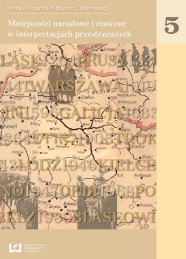Naród polski jako żywa struktura. Kształtowanie się poczucia odrębności narodowej Ślązaków pod wpływem uwarunkowań geograficzno-historycznych i geograficzno-politycznych
Polish nation as a living structure The development of a sense of national identity in Silesians under the influence of geographic-historical and geographic-political circumstances
Author(s): Andrzej Rykała, Marek SobczyńskiSubject(s): Geography, Regional studies, Regional Geography, Inter-Ethnic Relations, Ethnic Minorities Studies, Identity of Collectives
Published by: Wydawnictwo Uniwersytetu Łódzkiego
Keywords: Silesia; native population; national minority; ethnic minority; Silesian nationality; geographic-political and geographic-historical conditions;
Summary/Abstract: At the beginning of the twenty-first century, it was a huge surprise for many Poles that over 173 thousand people declared in the National Census that their nationality was Silesian, not recognised by Polish legislation and not present in the collective consciousness. This article has the following goals: analysis of the geographic-political and geopolitical conditions of the shaping of Silesian identity; explanation of the reasons that made one of many regional groups living in Poland – the Silesians – unable to find their place within a larger nation; identification of the components of a sense of group identity of Silesians and definition of the institutional forms of its expression; definition of the character and social reach of the discussion concerning the transformations of ethnic structure in Poland exemplified by the emancipation ambitions of Silesians; answering the question: is Silesian nationality against Polish nationality or does it enrich it? The sense of Silesian national autonomy was shaped as a result of territorial, political and economic references to historical “big homelands” and the “small homeland” of Silesia and its history, marked by changing national affiliation and the resulting cultural influences of three main nations - Poles, Germans and Czechs. These three cultures most often overlapped their influences in the eastern part of the province, i.e. in Upper Silesia. While the western area (Lower Silesia) found itself quite quickly under the political and administrative influence of Bohemia and Germany, Upper Silesia remained under Polish rule for longer. But the memory of this multi-generational and multinational legacy that formed the unique circumstances of the region based on the potential of coal and other resources allowed for maintaining the emotional, cultural and, above all, genealogical relationship with the community shaped by the coexistence of Poles that have been here for centuries and immigrating Germans. In the context of national aspirations of Silesians, we should realise that a nation is not a permanent structure. Nations form and die. Besides, the survival of “Silesian nation” is not sure. Therefore, the fear of all those tightly clutching the permanence of the structure of Polish nation seems ungrounded and stems from the lack of awareness of historical processes that various kinds of communities, including national communities undergo. As the results of the latest census have shown, Silesians feel different from Poles, Germans and Czechs, while also feeling Silesian and Polish at the same time.
Journal: Studia z Geografii Politycznej i Historycznej
- Issue Year: 2016
- Issue No: 05
- Page Range: 133-176
- Page Count: 44
- Language: Polish

